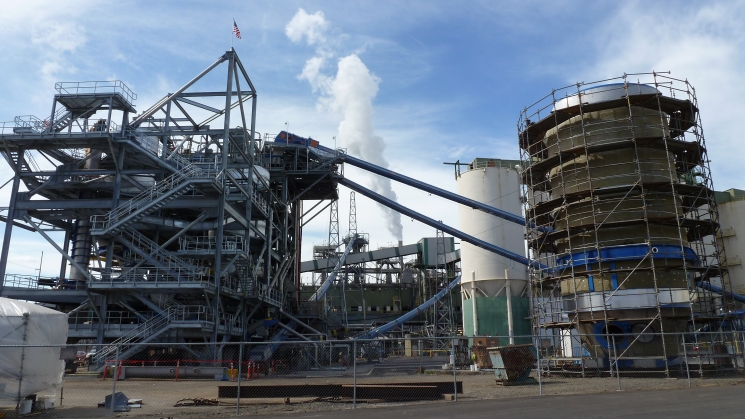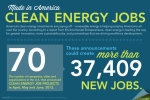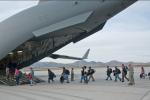
New screening equipment used to refine wood chips at the North Pacific Paper Corporation paper mill in Longview, Wash., is expected to save NORPAC 100 million kilowatt hours of electricity a year, which is enough energy to serve 8,000 Northwest homes. Construction of the chip pretreatment structure, shown here, is scheduled to be completed in 2013. | Photo courtesy of Bonneville Power Administration.
The popular expression “go big or go home” means to go all the way. And an energy efficiency project at a paper manufacturer in Longview, Washington, went so big that it’s thought to be the largest of its kind in the United States, ever. It’s so big that the energy experts at ESource, who answer thousands of energy-related questions every year, couldn’t find a reported project that’s saved more energy.
NORPAC is the largest newsprint and specialty paper mill in North America. Its 33 year-old mill produces 750,000 tons of paper a year and on a daily basis makes enough paper to stretch a 30 foot wide sheet from their Northwest mill all the way to Miami, Florida. NORPAC is the largest industrial consumer of electricity in the State of Washington, requiring about 200 average megawatts of power, which is about 1.75 million times more power than the average household uses in an entire month.
In the face of high manufacturing costs and a declining newsprint market, NOPRAC President Paul Whyatt says, “conserving and mitigating the costs of electricity is core to our survival.”
NORPAC buys its electricity from Cowlitz County Public Utility District (PUD), who buys wholesale power from the Bonneville Power Administration (BPA). BPA, Cowlitz PUD and other public utilities in the Northwest work with industrial companies to identify energy-savings opportunities.
“Energy efficiency is the first-choice, least-cost alternative for meeting the increasing demand for electricity in the Pacific Northwest,” says BPA Administrator Steve Wright. “This is a breakthrough project that sends a signal about the incredible opportunities out there.”
It takes a lot of energy, water, and wood to make paper and the process begins with wood chips. Refining wood chips is a mechanical process that requires large amounts of energy. (Refining machines are driven by numerouselectric motors that require thousands of connected horsepower.) BPA and Cowlitz PUD are funding the installation of new screening equipment between refiners that reduces the electricity and chemicals used to refine wood chips.
“It’s the first commercial installation of this technology in the world,” said Ray Harrison, fiber line manager, NORPAC.
The project, known as the Chip Pretreatment Interstage Screen Project, adds two new components to the NORPAC facility. Phase one, which was completed last summer, added new equipment that treats wood chips with steam and chemicals before they get refined into pulp. The second feature, the interstage screening, allows paper-ready wood fibers to bypass the second stage of refining. With less pulp in the secondary refiners NORPAC can cut its power requirements by about 12 percent. Once complete, the project is expected to save NORPAC 100 million kilowatt hours of electricity a year (12 average megawatts), which is enough energy to power 8,000 Northwest homes. In addition, the construction created 64 full-time jobs in Longview.
The improved refining processes have also allowed NORPAC to expand its product line. The result is NORPAC’s newest product, its Norbrite 92 high-grade office copy paper, which it began marketing in June.
The mill can now produce a brighter and whiter paper that’s made from less wood chips than a similar grade from their competitors.
Brian Skeahan, general manager of Cowlitz PUD, says even though this was a custom project the message to industry is clear. “Energy efficiency investments are good for business and the community. And there’s a world of opportunity out there.”




